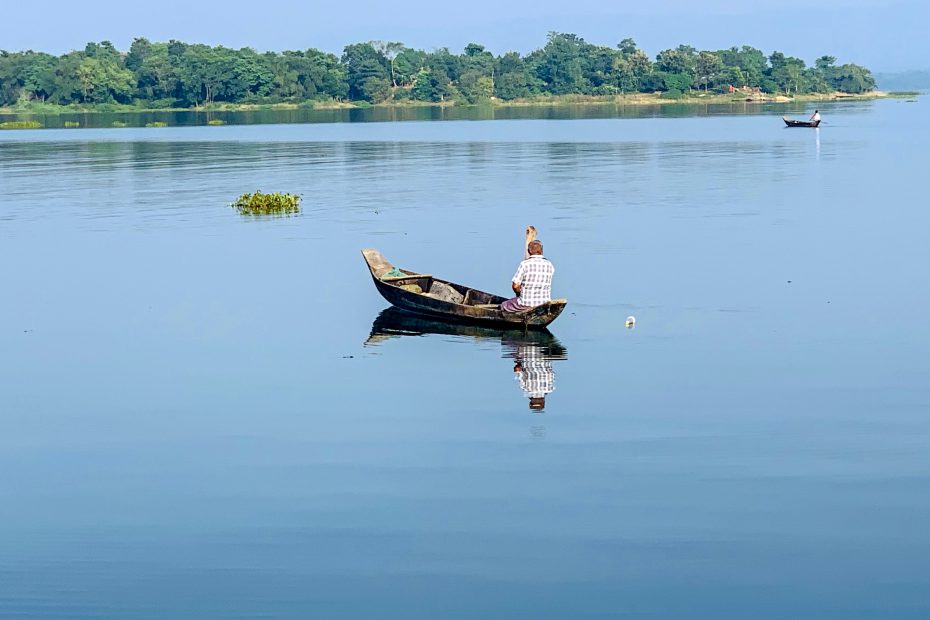The Sundarbans is a UNESCO World Heritage site spanning Bangladesh and India that encompasses the world’s largest mangrove forest. Known for its rich biodiversity, including the famous Royal Bengal Tiger, the Sundarbans offers a truly magical experience for nature lovers. One of the highlights is witnessing the spectacular sunsets over this lush landscape.
The Sundarbans features a complex network of tidal waterways, mudflats, and small islands surrounded by mangrove forests. The dense mangroves are home to tigers, crocodiles, spotted deer, monkeys, pythons, and hundreds of bird species. The biodiversity here is unmatched, with new species still being discovered. Wandering through the winding water channels, you may spot a crocodile basking in the sun or a monkey swinging from branches overhead.
To fully experience the majestic beauty of the Sundarbans, a sunset river cruise is a must. Lounging on the deck of a boat, you’ll have panoramic views as the sky transforms into a canvas of fiery orange, pink, and purple hues. The sunlight filters through the mangroves, creating a shimmering effect on the water. As the sun dips below the horizon, an enchanting tranquility sets in, broken only by the occasional bird call.
Some of the best places to view the sunset are from watchtowers strategically located along the river banks. Here, you can look out over a stunning vista of scattered islands cloaked in mangroves. Other excellent spots include the beaches of Jambukola, Dobanke, and Kochikhali which offer uninterrupted views over the rivers. No matter where you choose, the sunset over the Sundarbans is truly unforgettable.
When it comes to photographing the sunset here, using a tripod can help you steady your camera for sharper shots in low light. Settings like a low ISO and small aperture will allow you to capture the scene clearly. Try framing your photos with mangroves in the foreground to add depth and interest. To make colors pop, shoot during the “golden hour” right before the sun sinks below the horizon.
However, climate change poses significant threats to the fragile Sundarbans ecosystem. Rising sea levels, increasing salinity, and extreme weather events could alter these watery wilds forever. Conservation efforts like rehabilitation programs, alternative livelihoods, and sustainable eco-tourism aim to preserve the Sundarbans for future generations. We all have a responsibility to protect this natural wonder and mitigate climate impacts.
In summary, the Sundarbans offer a mesmerizing sunset spectacle for nature lovers and photographers. With incredible biodiversity, evocative landscapes, and magical lighting, sunset here is an unforgettable experience. We must support conservation initiatives to protect this remarkable place and its endangered wildlife. When visiting the Sundarbans, be sure to catch a blazing sunset over the mangroves and witness this World Heritage site at its most captivating.
Frequently Asked Questions
Q: Where are the Sundarbans located?
A: The Sundarbans are located in the Ganges-Brahmaputra delta across areas of southeastern Bangladesh and northeastern India. They cover over 10,000 square kilometers.
Q: What wildlife can be seen in the Sundarbans?
A: The Sundarbans are home to many rare and endangered species including Royal Bengal tigers, estuarine crocodiles, spotted deer, monkeys, pythons, and hundreds of bird species.
Q: When is the best time to visit the Sundarbans?
A: The best time is between October and March when the weather is cool and dry. Avoid the monsoon season from June to September.
Q: What threats does climate change pose to the Sundarbans?
A: Sea level rise, increasing salinity, extreme weather events, and other impacts of climate change threaten the delicate mangrove ecosystems of the Sundarbans.
Q: How can the Sundarbans be protected for future generations?
A: Conservation efforts like rehabilitation programs, alternative livelihoods for locals, sustainable eco-tourism, and reducing climate change impacts are key to preserving the Sundarbans.
